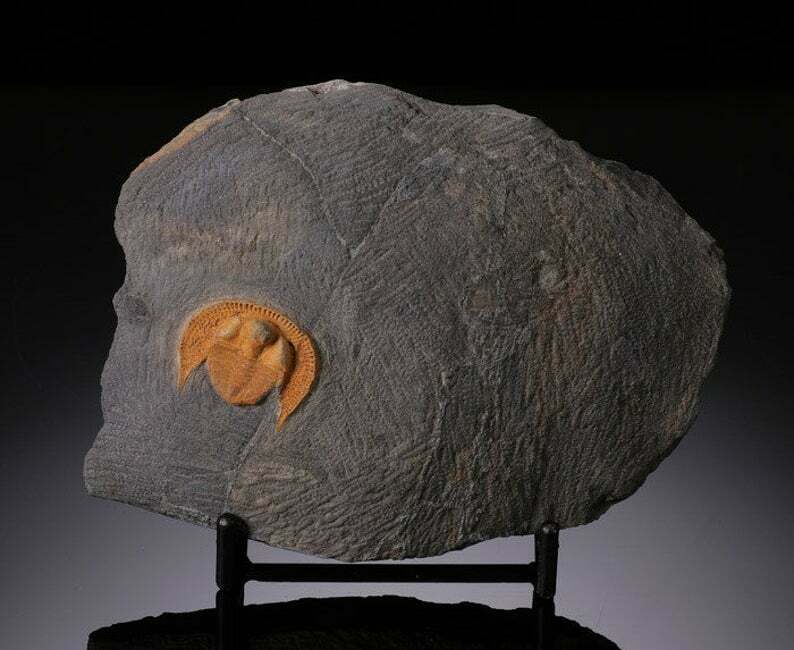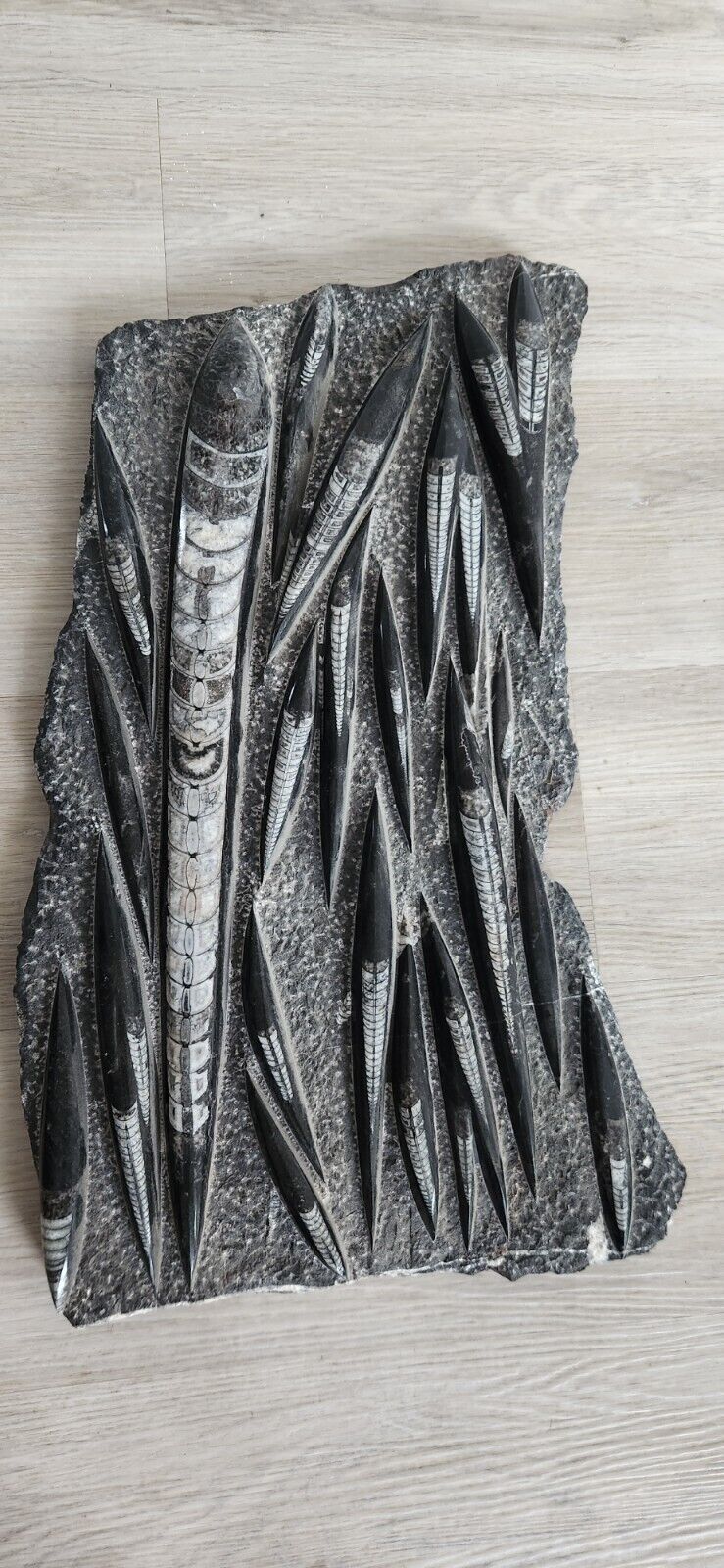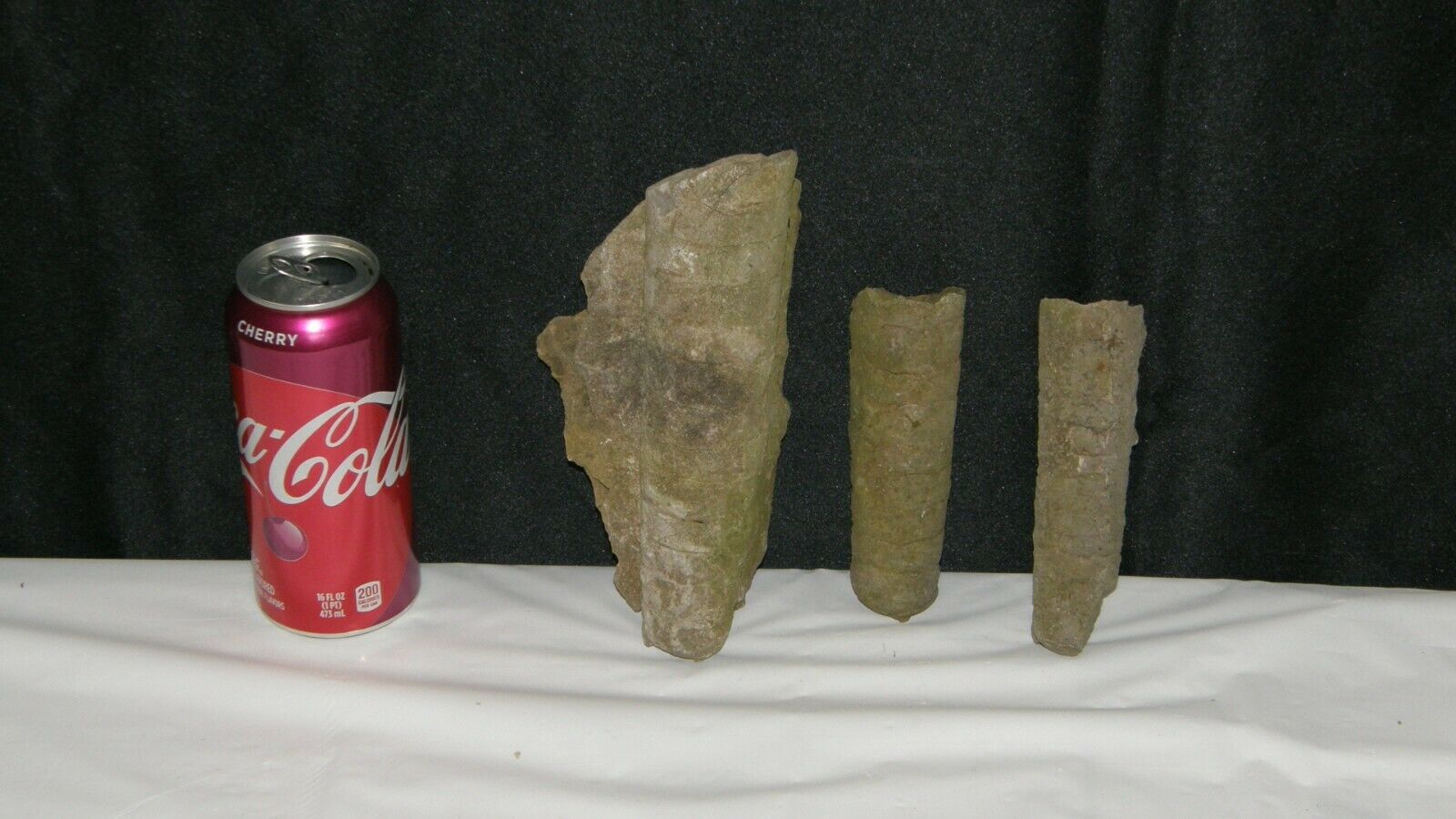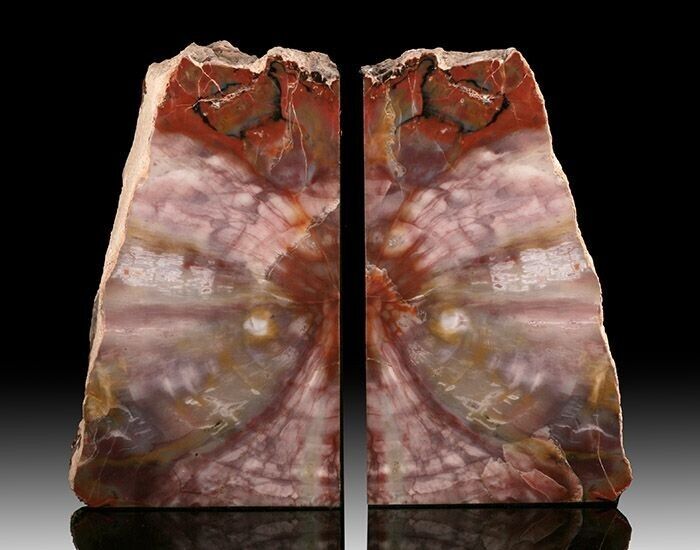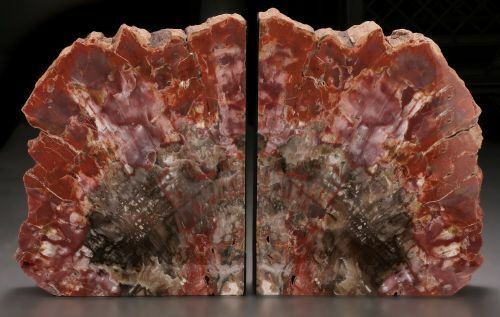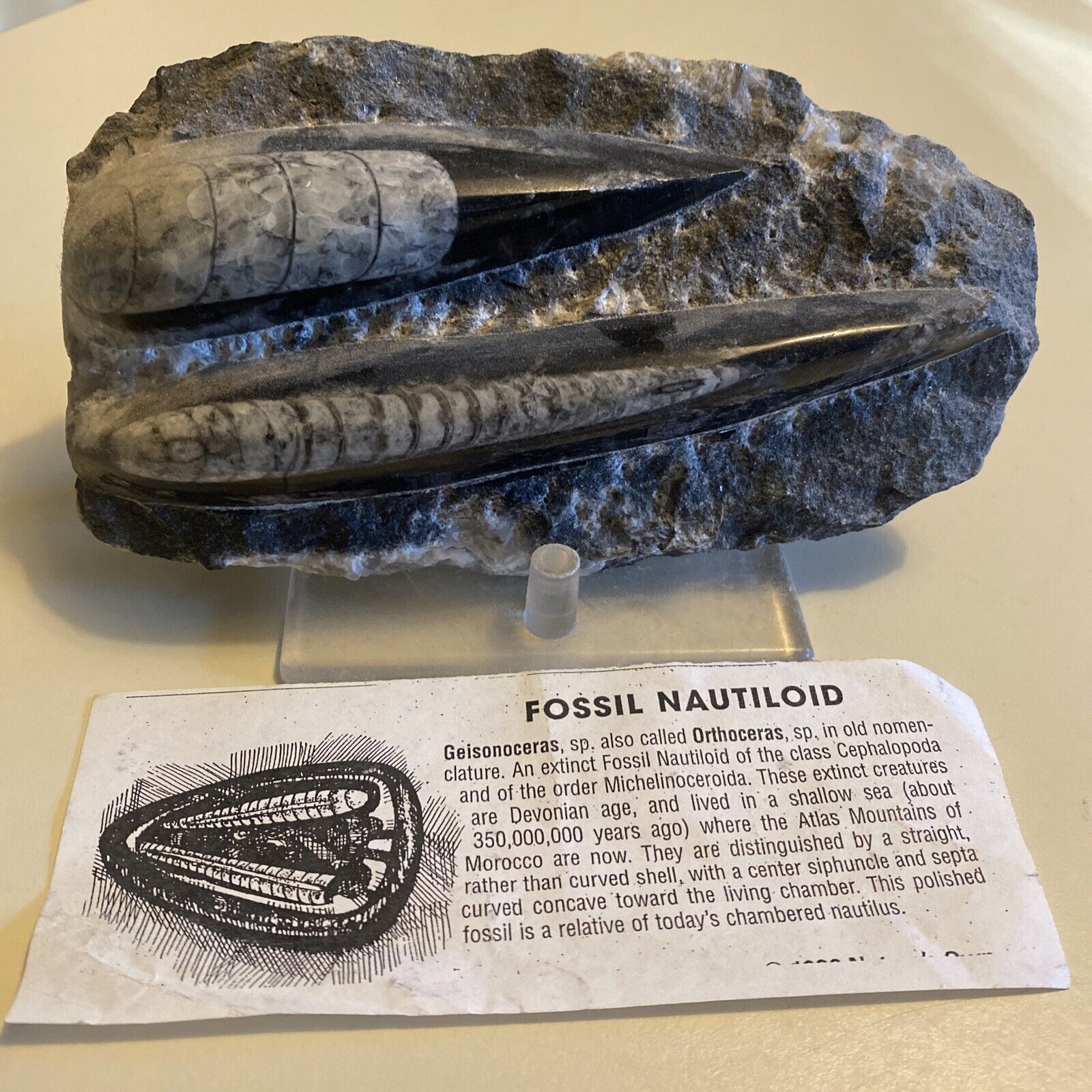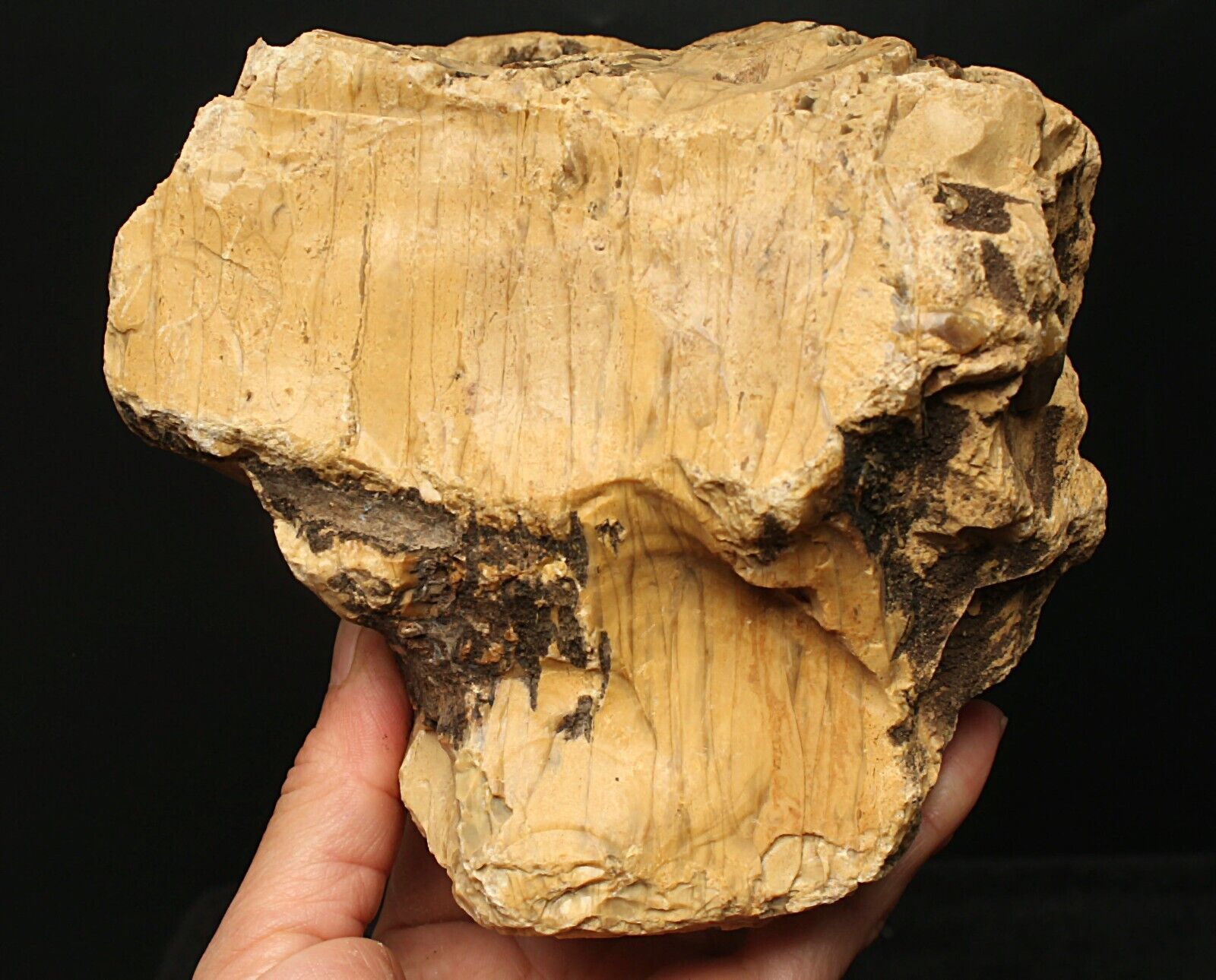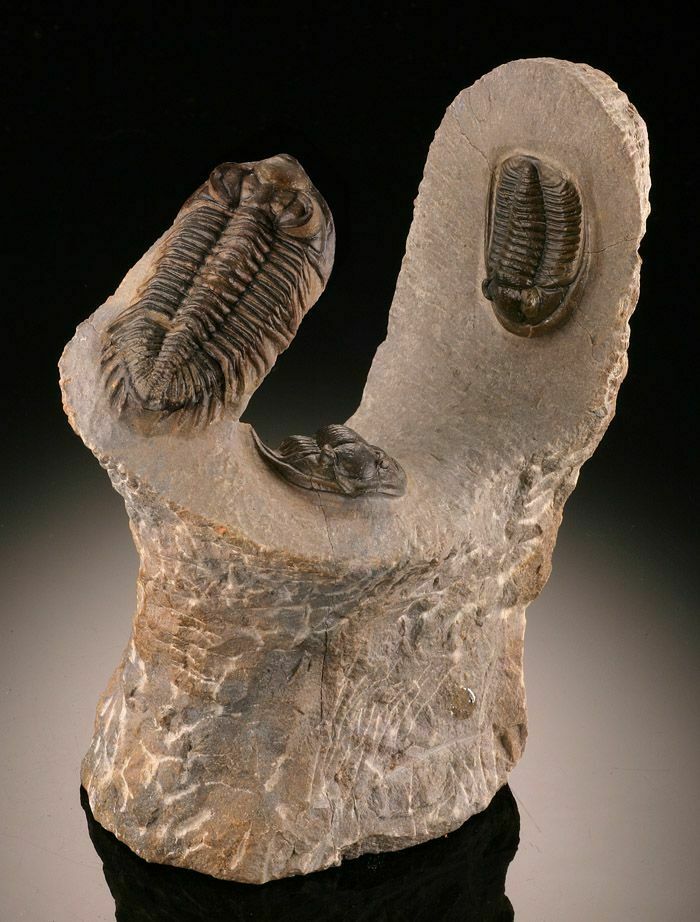-40%
Trilobite Nankingolithus sp....the Ordovician Period found near Mecissi, Morocco
$ 356.4
- Description
- Size Guide
Description
Trilobite Nankingolithus....Nankingolithus sp. is from the Ordovician Period and was found near Mecissi, MoroccoDimensions
Height: 3 1/4 Inches; Width: 4 1/2 Inches; Depth: 5/8 Inches
Description
Nankingolithus sp. is from the Ordovician Period and was found near Mecissi, Morocco. The broad, pitted fringe of the cephalon may have served as a strainer for particles kicked up by its 4 flailing "legs".
Measures: Overall Plate ~ 3-1/4" tall x 4-1/2" wide
Actual Trilobite: ~ 1" long x 1-1/8" wide
Time period: Ordovician / 500 myo
Discovery Location: T'Fessouma Mountain, Mecissi Area, Morocco
More Information:
Trilobites are extinct hard shelled marine arthropods with amazingly great diversity. It is estimated there were over 15,000 known species of Trilobita, making them the most diverse animal life form that ever existed on earth. In Morocco, new Trilobite specimens are being discovered every year. Trilobites are are important as paleo-zoic guide fossils, having existed for over 270 million years. They began their existence during the early Cambrian time period (520 mya), long before dinosaurs existed but went extinct around 250 mya, before dinosaurs died out.
Trilobites keen eye structures were highly adaptable to their environment. Some had lenses extending off of antenna like protrusions, while others had large eyes with thousands of lenses which enabled the creature to see 360 degrees. The name Trilobite means "three lobes", and is so named due to the long sections of the animals body, the Left & Right Pleural Lobes and the middle Axial Lobe.
With their graceful body lines one can understand why these interesting yet bizarre creatures have been nicknamed "The Butterflies of the Sea".
